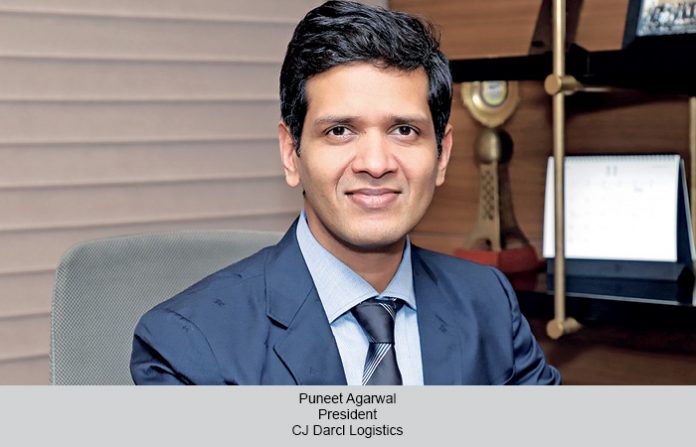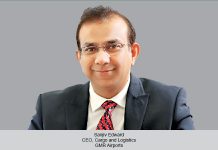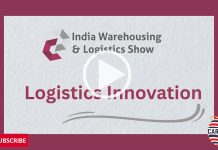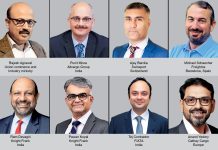Logistics sector impacts SMEs who struggle with multiple vendors. Lack of transparency, ambiguity in pricing and access to advanced tech is another challenge. Amount of time spent during loading and unloading must be addressed. For this technology is necessary, says Puneet Agarwal, President, CJ Darcl Logistics.
CT Bureau
What are your core logistics services—freight forwarding, warehousing or last-mile delivery?
Our expertise lies in the Full Truck Load (FTL) segment, which offers a comprehensive suite of logistics services with end-to-end delivery of goods from first to last-mile. Our capabilities span across verticals, including road and rail transportation, air cargo, coastal shipping, multimodal transportation, project logistics, warehousing and distribution and freight forwarding. We also provide value-added services such as product sorting, kitting, bundling and promotional packaging. We manage the entire supply chain for our clients, spanning across sectors such as fast moving consumer goods (FMCG), automotive, oil, gas, renewable energy, pharmaceuticals, construction and infrastructure.
How do you coordinate handovers between transport modes to ensure time and cost efficiency?
Seamless coordination across different transport modes and teams is paramount to multimodal strategy. Our tech advanced infrastructure facilitates transparency, leading to swift handover from one mode to another. With GIS and SIM-based tracking IoT devices embedded in our fleet and Transport Management Software (TMS), we have access to real-time visibility into the freight flow, enabling proactive planning and coordination for handovers. Our enterprise resource planning (ERP) system connects all our branch offices across India and in-house digital control towers to ensure better communication and collaboration among internal teams, avoiding idle times and delays.
What innovations or expansions are you planning in the next 12 to 24 months?
We aim to increase our market share in sustainable long-haul delivery. We plan to expand our rail and multimodal logistics infrastructure. We are also looking at investing in next-gen technologies and working towards enhancing TMS to better serve our customers. This apart, we are planning to speed up adoption of alternate fuel vehicles as part of our focus on reducing carbon emissions and offering our clients more sustainable solutions.
Are you working towards more sustainable transport methods?
We have outlined a phased and robust decarbonisation roadmap. Its key components include transitioning our fleet from BS IV to BS VI vehicles, ensuring no vehicle exceeds a 10-year life cycle, and optimising route planning through digital tools to reduce fuel consumption. We are actively exploring the use of EVs for last-mile urban deliveries and LNG vehicles for long-haul operations.
In line with our multimodal push, we are scaling our rail logistics network to cut down emissions per trip. We have integrated renewable energy solutions such as solar panels with an expected energy generation of 3.5 lakh kWh per year, water retreatment plants and rainwater harvesting systems across major facilities, including our warehouses and distribution centres.
What types of goods are you best equipped to handle?
We can manage complex, high-volume and regulated goods. Our core competencies include transportation of heavy machineries, oil and gas, temperature sensitive cargo, renewable energy, FMCG and chemicals. We manage end-to-end delivery of HAZMAT and construction and infrastructure equipment with a skilled team of experts who are adept at managing successfully delivery of complex goods. Our expertise extends to navigating the documentation and compliance requirements associated with the transportation of complex materials. Our specialised capabilities combined with our robust pan-India network makes us the preferred partner for industries with the most demanding logistics needs.
What are the crucial pain points? Can you share the solutions?
It is the fragmented nature of logistics sector, impacting SMEs who often struggle with multiple vendors, lack of transparency, ambiguity in pricing, and access to advanced technologies. To address this, we provide integrated solutions from transportation to warehousing and distribution, streamlining management and ensuring centralised accountability. Another pain point is the amount of time spent idle during loading and unloading. To combat that, we leverage our IoT devices enabled fleet and TMS that provide us with real-time visibility into the estimated arrival times of consignments, minimising idle time and overall costs.
What is PM Gati Shakti’s impact on cargo movement today? How do you see the industry evolving?
The development of DFCs, inland waterways, Gati Shakti Cargo terminals, MMLPs and a lot more has been initiated and executed under PMGS. These initiatives have together streamlined transitions between different modes of transport. As the industry evolves, efforts by public and private sector entities will drive its growth, leading to the sector’s sustainable and scalable development.















